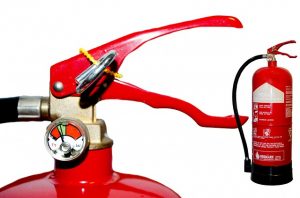 Although fire extinguishers are great for putting out small fires – or preventing them from turning into big ones – make sure that yours are ready should the time come. Consider these tips from OSHA:
Although fire extinguishers are great for putting out small fires – or preventing them from turning into big ones – make sure that yours are ready should the time come. Consider these tips from OSHA:
Be certain the extinguishers are the type required by your fire exposure. The extinguisher to use depends on the type of fire:
- Class A fires involve materials such as wood, paper, or cloth which produce glowing embers or char.
- Class B fires involve flammable gases, liquids, and greases, including gasoline and most hydrocarbon liquids, which must be vaporized for combustion to occur.
- Class C fires involve fires in live electrical equipment or in materials near electrically powered equipment.
- Class D fires involve combustible metals, such as magnesium, zirconium, potassium, and sodium.
Put extinguishers in proper and easily identifiable locations. Locate them along normal paths of entry and exit and make sure that they’re clearly visible. Where you can’t avoid visual obstruction completely, provide directional arrows to indicate the location of extinguishers and signs marked with the extinguisher classification. If devices intended for different classes of fire are located together, mark them conspicuously to ensure that employees choose the proper extinguisher in case of fire.
Keep portable extinguishers fully charged and operable. They should be kept in their designated locations at all times when not being used. When extinguishers are removed for maintenance or testing, provide a fully charged and operable replacement unit.
These tools are valuable only if they’re available and functioning when needed. For more recommendations on keeping your workplace as safe as possible, talk with our risk management professionals. We’re here to help!





